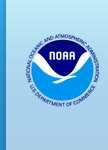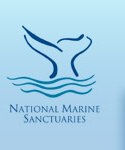Florida Keys Boaters, Fishermen Pay More Than $30,000 to Settle Grounding, Poaching Cases
Oct. 13, 2010
Media Contact:
Karrie Carnes
305-809-4700 x236
Links:
Florida Fish and Wildlife/Rules and Regulations
NOAA has reached civil settlements totaling more than $30,000 in recent cases involving violations of the National Marine Sanctuaries Act, including vessel groundings, illegal anchoring and poaching in the Florida Keys.
The owner and operator of the sailboat Sudden Impulse paid a $6,000 civil penalty for a grounding that injured coral and reef framework in Florida Keys National Marine Sanctuary in June 2009. The 41-foot sailboat ran aground at Key Largo Dry Rocks.
This year, the owners and operators of three recreational vessels each paid civil penalties of $5,000 in grounding cases impacting seagrass. The 41-foot vessel Orca and a 24-foot power catamaran ran aground in seagrass meadows in the lower Florida Keys, and the 38-foot vessel Intrepid struck and damaged seagrass in the upper Florida Keys in 2009. Injuries to seagrass, which include scarring from vessel propellers, are prohibited in the sanctuary.
“Destruction of slow-growing coral and seagrass resources through boat grounding degrades important habitats and has the potential to disrupt the larger Florida Keys ecosystem,” said Sean Morton, sanctuary superintendent. “Many vessel groundings are entirely preventable through experience, patience and planning.”
Additional cases this year include a $12,000 civil penalty settlement with the owner and operator of the charter fishing vessel That’s Right for anchoring in and fishing within the Tortugas Ecological Reserve in May 2009. This highly protected area of the sanctuary is a no-take and no-anchor zone.
“These cases are examples of what can be achieved through cooperative law enforcement efforts to protect Florida’s and our nation's marine resources,” said Major Alfredo Escanio, Regional Commander Division of Law Enforcement, Florida Fish and Wildlife Conservation Commission (FWC).
NOAA’s Office of Law Enforcement and the FWC work closely with NOAA’s Office of General Counsel to enforce the National Marine Sanctuaries Act, which enables NOAA to achieve its mission of conserving and managing the nation’s coastal and marine resources.
“Knowledge of sanctuary waters and compliance with regulations is important for not only protecting the special resources of the Florida Keys, but also avoiding the costs associated with breaking the law,” Morton said. “I commend the great work of Florida Fish and Wildlife Conservation Commission officers and NOAA’s Office of General Counsel in addressing these violations.”
Vessel operators should carry up-to-date NOAA nautical charts and understand state and federal regulations when in Florida Keys National Marine Sanctuary.
Florida Keys National Marine Sanctuary protects 2,900 square nautical miles of critical marine habitat, including coral reef, hard bottom, sea grass meadows, mangrove communities and sand flats. NOAA and the state of Florida manage the sanctuary.
NOAA’s mission is to understand and predict changes in the Earth's environment, from the depths of the ocean to the surface of the sun, and to conserve and manage our coastal and marine resources. Visit us online or on Facebook.


